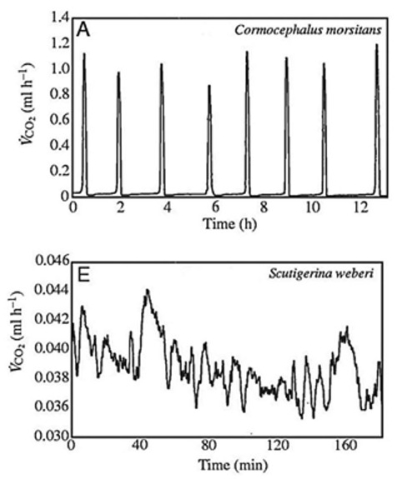Use the following information to answer the question(s) below.
Many terrestrial arthropods exchange gases with their environments by using tracheae, tubes that lead from openings (called spiracles) in the animal's exoskeleton or cuticle directly to the animal's tissues. Some arthropods can control whether their spiracles are open or closed; opening the spiracles allows carbon dioxide produced in the tissues to travel down the tracheae and be released outside the animal. Klok et al. measured the carbon dioxide emitted over time (represented by VCO2) by several species of centipedes. The figure below presents graphs of their results for two species, Cormocephalus morsitans and Scutigerina weberi. (C. J. Klok, R. D. Mercer, and S. L. Chown. 2002. Discontinuous gas-exchange in centipedes and its convergent evolution in tracheated arthropods. Journal of Experimental Biology 205:1019-29.) Copyright 2002 The Company of Biologists and the Journal of Experimental Biology. 
-On which body segment are arthropod wings attached?
A) head
B) abdomen
C) thorax
D) evenly split between the abdomen and thorax
Correct Answer:
Verified
Q16: What is the only group of Mollusca
Q17: Adaptations to terrestrial environments evolved independently in
Q19: The presence of a lophophore in a
Q20: Which of the following organisms would you
Q23: A terrestrial animal species is discovered with
Q24: Use the following information to answer the
Q25: Use the following information to answer the
Q26: Use the following information to answer the
Q36: A shared derived characteristic for members of
Q38: The protostome developmental sequence arose just once
Unlock this Answer For Free Now!
View this answer and more for free by performing one of the following actions

Scan the QR code to install the App and get 2 free unlocks

Unlock quizzes for free by uploading documents